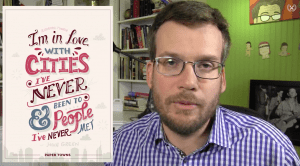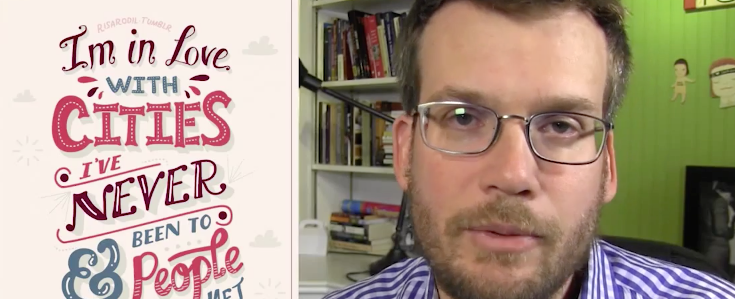Attribution, Coincidence and Memory in the Internet Age
 Allegations of plagiarism fly quickly the modern age. When similar text or images wind up being used without attribution, often times, others are quick to hurl accusations of plagiarism, even before all of the facts are known.
Allegations of plagiarism fly quickly the modern age. When similar text or images wind up being used without attribution, often times, others are quick to hurl accusations of plagiarism, even before all of the facts are known.
Consider the recent case of Sarah Scurr.
In 2006, Scurr went on a cruise to the Northern Patagonian Ice Field in the waters off of Chile. There she snapped a slew of photographs, including a seemingly ordinary photo of an iceberg shot against a cloudy sky.
In 2009, she then submitted the photo to The Telegraph’s Big Picture photography competition and it was named among the best of the week. Six years later, that photograph would become the subject of controversy as another photographer, Marisol Ortiz Elfeldt, a Chilean reporter, would claim that the photo was his.
Elfeldt offered, as proof an “unphotoshopped” version of the image and the similarities were definitely striking. Clearly the same iceberg, same sky and same time of day. The most obvious difference being that Scurr’s photo was colored differently.
The Telegraph began to investigate the case and, quickly, additional differences cropped up. The waves in the water were slightly different and the perspective was ever so slightly shifted between the two images.
Then, both Scurr and Elfeldt were able to provide their original images, both showing the same date, November 6, 2006, and almost the exact same time. It then became clear that Scurr and Elfeldt were both on the same boat and simply snapped the same photo seconds apart.
However, Scurr wasn’t the only one facing challenges with attribution this month. Author and video blogger John Green found himself at the center of a controversy after it was discovered a popular quote from his book Paper Towns was not actually in the book.
The quote was repeatedly attributed to Green and Paper Towns on sites like Tumblr and Good Reads. It became so popular that Green, not realizing the quote wasn’t his, began to sell posters with the quote on it sometime after 2012. Though he didn’t recall writing the quote, the book came out in 2008 and, understandably, he doesn’t remember writing a lot of it.
Green, however, searched for the quote and, after learning it wasn’t in the book, offered up a mea culupa video in which he not only apologized to the quote’s original author, a 13-year-old girl named Melody Truong, but said he was retroactively giving Truong royalties for the poster and selling another one of Truong’s posters in his story, with royalties going to her.
But Green ended the video with a speech about how the incident, “Speaks to how screwed up credit, sourcing and copyright are on the Internet.”
And Green is fundamentally right. These are very messed up issues and they’re going to get worse before they get better. But there are still things that everyone can and should to do reduce future issues and, most importantly, ensure attribution isn’t a lost art.
A New Era for Attribution
 The Internet is certainly an unprecedented time for creativity. Over a billion people are standing shoulder to shoulder in a virtual world creating content. Whether its social networking posts, photographs taken on cell phones or multimedia content made on PCs, everyone is making stuff.
The Internet is certainly an unprecedented time for creativity. Over a billion people are standing shoulder to shoulder in a virtual world creating content. Whether its social networking posts, photographs taken on cell phones or multimedia content made on PCs, everyone is making stuff.
In the same vein, everyone is sharing that stuff. Though social networking, blogging, and personal interaction, we’re all sharing, discussing and interacting with more content than ever.
While all of that is great and it means that every creator, even copyright weirdos such as myself, can find a broad audience, it also means that we are going to collide with each other more and more.
One part of that problem, which reared its ugly head in the John Green case, is attribution erosion. The basics of attribution erosion is simple:
The More Times a Work Changes Hands, The More Likely Attribution is Going to Be Missing, Incorrect or Incomplete
This is because, even in the digital world, the copies of a work are never perfect. Quotes are changed, photographs are cropped, metadata is stripped and attribution is often lost.
Even so-called perfect reuploads are imperfect. Artist Pete Ashton demonstrated this by uploading the same photo to Instagram 100 times until, due to the reduction in quality, the photo become unrecognizable.
Every time a work changes hands online, something is lost or changed from it and, inevitably, the attribution is impacted.
The other issue is pure coincidence, as with the Scurr case. With so many content creators working independently, overlaps and similarities are inevitable.
I learned this first hand in January last year when, shortly after the announcement that Nest was being bought by Google, I tweeted a rather lame joke about the purchase.
With Google buying Nest. I wonder how long it will take before Google requires me to sign up for Google+ to get my temp above 60.
— Jonathan Bailey (@plagiarismtoday) January 13, 2014
The tweet ended up becoming fairly popular, with over 150 retweets, including Om Malik. Predictably though, I wasn’t the only one who made that joke or a similar one and a few of the others who had accused me of plagiarism.
The truth is that it was a pretty obvious joke and it’s easy to see how dozens of people could think of it without pulling from each other. Yet, that didn’t stop at least a couple of people of accusing me of ripping it off.
But all of this raises the question: What do we do? The Internet isn’t slowing down and these types of problems are just going to get worse. How can we ensure attribution and limit or reduce the number of times false plagiarism allegations are made?
The answer isn’t simple.
Fixing the Problem
As I pointed out in my earlier post on attribution erosion, some objects are more resistant to attribution erosion than others. Physical objects rarely lose any attribution information since they are rarely copied and are instead passed around), while other tools such as image watermarking can help in other cases, we should assume that attribution erosion is a rule online.
That being said, there are things we can and should do. First. we need to build our social sharing tools with attribution in mind. When Twitter rolled out its new Retweet button in 2009, it drew a lot of controversy. However, the retweet button is an example of a social share the preserves attribution perfectly, not only crediting the original author, but putting that attribution front and center.
Facebook has the share button, Tumblr has reblogging and the beat goes on, but the problem with the tools that exist are two-fold. First, they are often less desirable than other, less-attribution-friendly, alternatives, and second they are useless when works are shared across technological boundaries.
For example, if you want to share a Tweet, it’s easy to hit Retweet if you’re on Twitter, but how do you do it on Facebook? Without a cross-platform way to share things with attribution preserved, attribution will still get lost easily as work is passed around.
But while technology might be able to solve that particular problem, making it more desirable means battling human nature and habit. Copy and paste have been around for 40 years and are as engrained in our use of computers as opening and closing applications. Couple that with the fact attribution is often seen as secondary to the message and it’s easy to see how many people will snip content without snipping the attribution.
This means that there will have to be efforts to fix attribution as well. Companies such as Elog.io are already working in this field, but the efforts here have been limited because there really isn’t a great deal of money to be made making sure photos and poems get proper credit.
But even if we are successful at battling attribution erosion, we bump back into the issue of coincidence.
With so many creators working at the same time from a lot of the same source material similar jokes, stories, photographs, etc. are going to be created. To that end, there needs to be a serious discussion about what is and is not likely coincidence. However, this can be extremely confusing.
For example, while it is coincidence that two comic characters named “Dennis the Menace” appeared on the exact same day in 1951, a short phrase of 9-12 words is unlikely to be duplicated by coincidence considering the breadth of the English language.
The problem is that what feels like coincidence often isn’t and vice versa. Elfeldt, for example, initially didn’t think it could be a coincidence another photographer took a nearly identical photo even though it’s almost certain he saw and stood near Scurr and other photographers as they took theirs.
In short, what we need is both a greater respect and protection of attribution, but also a greater understanding that we are not working in a bubble. This isn’t going to mean just a technological solution, but a complete rethink of what it means to be an author or a creator in 2015, with the focus being less on the big idea and more on the actual work.
Bottom Line
The Internet has forever changed the idea of authorship. A hundred years ago, being the author of a book or creator of a famous painting was a ticket to near-immortality. Between the nature of physical objects and the limited number of creators working, attribution seemed eternal (even if it never was).
In 2015, attribution erodes quickly and everyone is an author. There is little permanence to the act of creation anymore and even less in the attribution to that creation. While technology made some amazing things possible, it would be nice if it could also add back some of the permanence to attribution.
But that’s going to involve not just some tweaks and changes to the tech, but changing some habits in society.
On that front, the idea of everyone being a creator is probably the best hope we have for change. After all, improving attribution is in everyone’s best interest since everyone creates things they likely want to be credited for.
As such, attribution, citation and authorship are issues that have an impact on everyone online and they’re issues everyone benefits if they are solved.
So while there are no easy answers, there’s at least reason to work together to find one.
Iceberg photo by Sarah Scurr and reused from The Telegraph.
Want to Reuse or Republish this Content?
If you want to feature this article in your site, classroom or elsewhere, just let us know! We usually grant permission within 24 hours.
